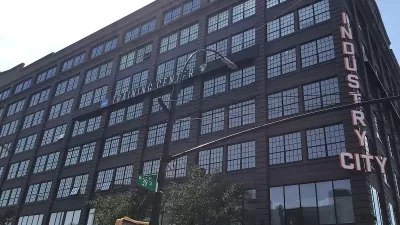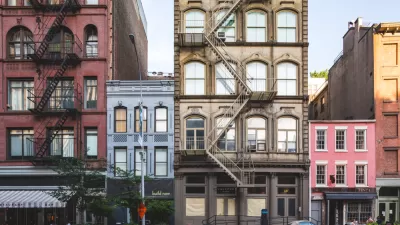The rezonings in question occurred during the Bloomberg administration, but advocates are seizing on the relevance of that experience to the rezonings of the de Blasio administration.

Caroline Spivack shares news of a new study by the Churches United for Fair Housing (CUFHH) that "lays bare the inequalities spurred by city-led rezonings, and points to the dire need for the de Blasio administration to study the racial impacts of land use actions poised to reshape New York City neighborhoods…"
The "Zoning & Racialized Displacement in NYC" [pdf] report analyzes two specific rezoning efforts from the Bloomberg administration—the 2003 Park Slope and 2005 Williamsburg rezonings—claiming the changes "displaced thousands of black and Latino residents as the neighborhoods’ populations grew," according to Spivack.
"Between 2000 and 2015, Williamsburg and Greenpoint saw a population increase of more than 20,000, but simultaneously saw a decrease of about 15,000 Latino residents, according to the report."
The advocates behind the report are using those findings to push for a citywide bill that "would mandate the city conduct a racial impact study for land use actions that require an environmental review."
As noted in the article, de Blasio's administration has achieved a wave of rezonings around the city, in East New York, Downtown Far Rockaway, East Harlem, Jerome Avenue, Inwood, and Staten Island’s Bay Street Corridor. "Three others are on the immediate horizon in Brooklyn’s Bushwick and Gowanus neighborhoods, and for a swath of the Bronx’s Southern Boulevard," according to Spivack.
Many of the same points, and from the other side of the issue, were debated recently with regard to the Williamsburg rezoning after comments made by Rep. Alexandria Ocasio-Cortze earlier this fall.
FULL STORY: How NYC rezonings spur ‘racialized displacement’ throughout the city

Alabama: Trump Terminates Settlements for Black Communities Harmed By Raw Sewage
Trump deemed the landmark civil rights agreement “illegal DEI and environmental justice policy.”

Study: Maui’s Plan to Convert Vacation Rentals to Long-Term Housing Could Cause Nearly $1 Billion Economic Loss
The plan would reduce visitor accommodation by 25% resulting in 1,900 jobs lost.

Why Should We Subsidize Public Transportation?
Many public transit agencies face financial stress due to rising costs, declining fare revenue, and declining subsidies. Transit advocates must provide a strong business case for increasing public transit funding.

Paris Bike Boom Leads to Steep Drop in Air Pollution
The French city’s air quality has improved dramatically in the past 20 years, coinciding with a growth in cycling.

Why Housing Costs More to Build in California Than in Texas
Hard costs like labor and materials combined with ‘soft’ costs such as permitting make building in the San Francisco Bay Area almost three times as costly as in Texas cities.

San Diego County Sees a Rise in Urban Coyotes
San Diego County experiences a rise in urban coyotes, as sightings become prevalent throughout its urban neighbourhoods and surrounding areas.
Urban Design for Planners 1: Software Tools
This six-course series explores essential urban design concepts using open source software and equips planners with the tools they need to participate fully in the urban design process.
Planning for Universal Design
Learn the tools for implementing Universal Design in planning regulations.
Smith Gee Studio
Alamo Area Metropolitan Planning Organization
City of Santa Clarita
Institute for Housing and Urban Development Studies (IHS)
City of Grandview
Harvard GSD Executive Education
Toledo-Lucas County Plan Commissions
Salt Lake City
NYU Wagner Graduate School of Public Service





























